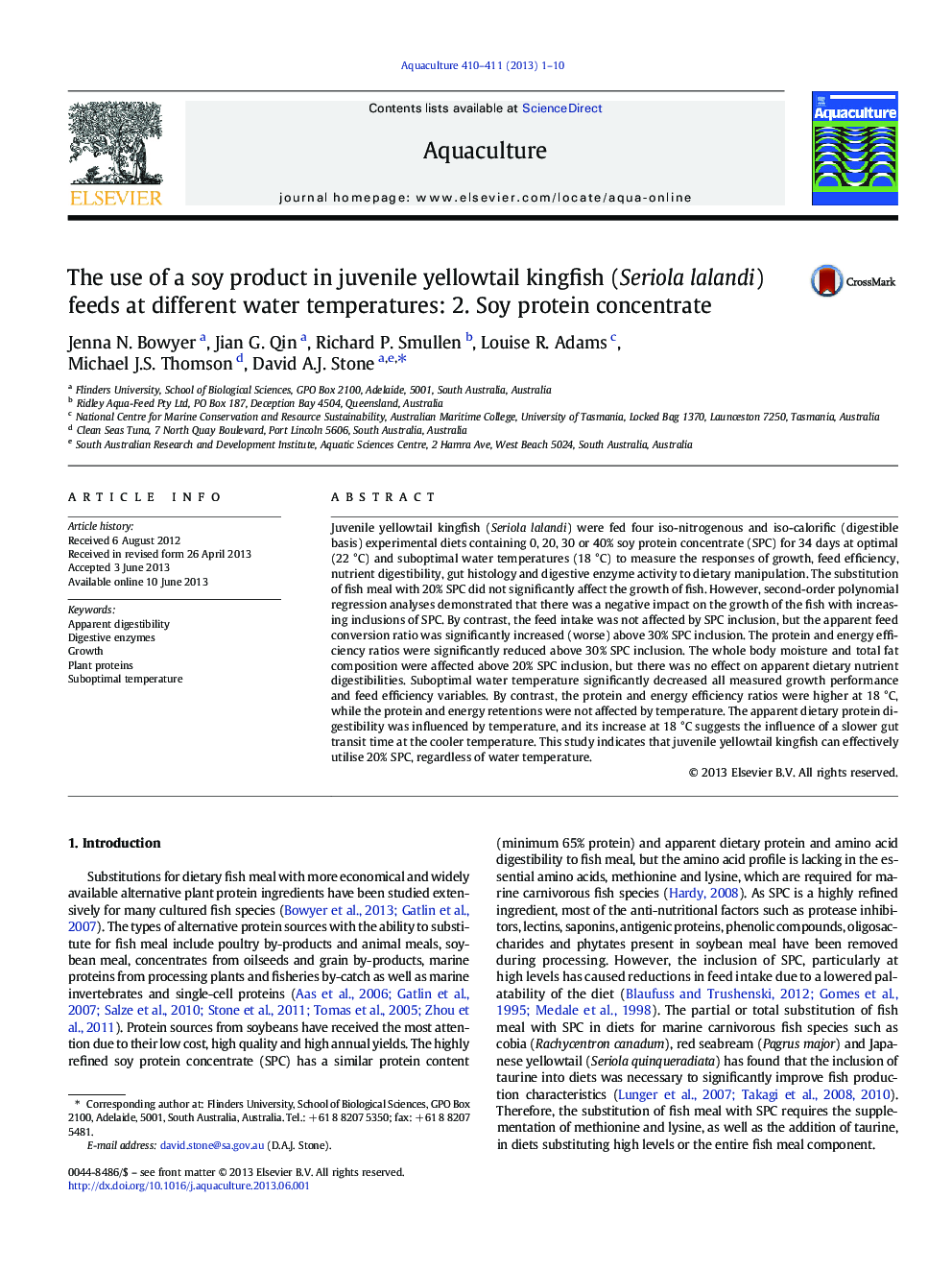| Article ID | Journal | Published Year | Pages | File Type |
|---|---|---|---|---|
| 2422081 | Aquaculture | 2013 | 10 Pages |
•Soy protein concentrate can successfully replace fish meal by 20%.•Soy protein inclusion beyond 20% reduced weight gain.•Protein digestibility increased when temperature was < 18 °C.•Soy inclusion increased feed conversion ratio above 30% SPC inclusion.•The acceptable soy inclusion in yellowtail kingfish diets is 20%.
Juvenile yellowtail kingfish (Seriola lalandi) were fed four iso-nitrogenous and iso-calorific (digestible basis) experimental diets containing 0, 20, 30 or 40% soy protein concentrate (SPC) for 34 days at optimal (22 °C) and suboptimal water temperatures (18 °C) to measure the responses of growth, feed efficiency, nutrient digestibility, gut histology and digestive enzyme activity to dietary manipulation. The substitution of fish meal with 20% SPC did not significantly affect the growth of fish. However, second-order polynomial regression analyses demonstrated that there was a negative impact on the growth of the fish with increasing inclusions of SPC. By contrast, the feed intake was not affected by SPC inclusion, but the apparent feed conversion ratio was significantly increased (worse) above 30% SPC inclusion. The protein and energy efficiency ratios were significantly reduced above 30% SPC inclusion. The whole body moisture and total fat composition were affected above 20% SPC inclusion, but there was no effect on apparent dietary nutrient digestibilities. Suboptimal water temperature significantly decreased all measured growth performance and feed efficiency variables. By contrast, the protein and energy efficiency ratios were higher at 18 °C, while the protein and energy retentions were not affected by temperature. The apparent dietary protein digestibility was influenced by temperature, and its increase at 18 °C suggests the influence of a slower gut transit time at the cooler temperature. This study indicates that juvenile yellowtail kingfish can effectively utilise 20% SPC, regardless of water temperature.
